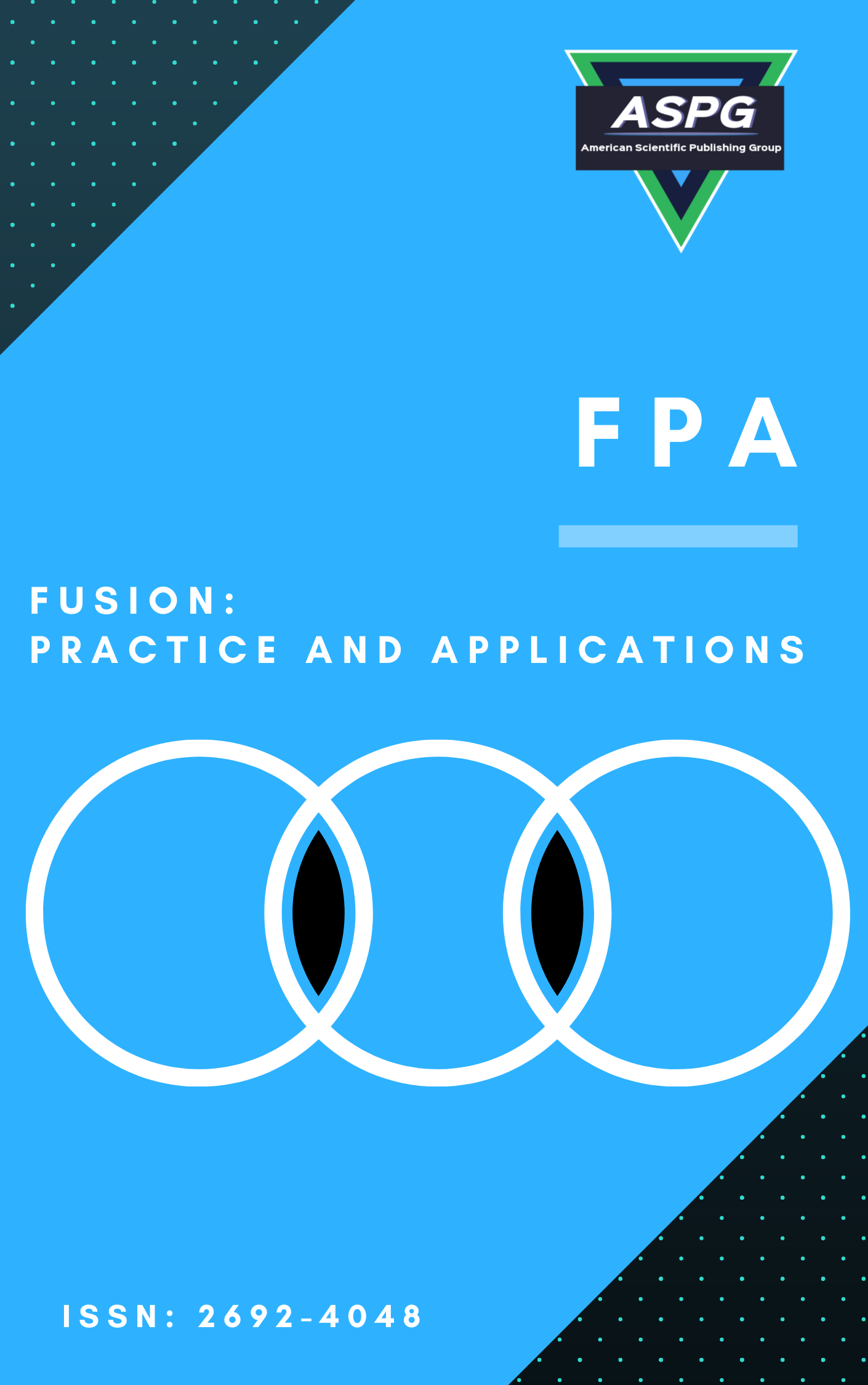

Volume 19 , Issue 1 , PP: 38-49, 2025 | Cite this article as | XML | Html | PDF | Full Length Article
N. Deepaletchumi 1 * , R. Mala 2
Doi: https://doi.org/10.54216/FPA.190104
Adverse Drug Reaction (ADR) is a significant global public health issue and the main cause of death. Generally, the effects of ADR are complex. Clinically, they can cause major patient damage and, in some cases, death. Besides, this outcome in significant healthcare costs financially owing to enlarged hospital visits, extra treatments, and harm to productivity. Therefore, early recognition and mitigation of ADRs are vital for the patients. Enhancing the early detection of ADRs and deadliness could severely reduce the harm to patients, improve patient safety, decrease healthcare costs, and increase the efficacy of the drug development procedure. Conventional pre-clinical toxicity tests are expensive, time-consuming, and frequently fail to forecast human-specific toxic effects. Artificial Intelligence (AI)-based deep learning (DL) has been quickly adopted in numerous areas, with healthcare, for its latent to manage huge datasets, find out patterns, and generate predictions. This study presents a new Adverse Drug Reaction Detection through Deep Learning and Improved Red-Tailed Hawk Algorithm (ADRD-DLIRTHA). The main intention of the ADRD-DLIRTHA model is to enhance the detection and classification process of ADR using advanced hybrid and optimization techniques. At first, the data normalization stage applies z-score normalization for converting input data into a beneficial set-up. Furthermore, the proposed ADRD-DLIRTHA method designs a convolutional neural network and long short-term memory (CNN-LSTM) technique for the classification process. At last, the improved red-tailed hawk (IRTH) algorithm-based hyperparameter selection process has been applied to optimize the classification results of the CNN-LSTM system. A wide range of experimentation was led to authorize the performance of the ADRD-DLIRTHA system. The simulation results specified that the ADRD-DLIRTHA model emphasized advancement over other existing techniques
Adverse Drug Reaction , Deep Learning , Improved Red-Tailed Hawk Algorithm , Data Normalization , Artificial Intelligence
[1] Gupta, R., Srivastava, D., Sahu, M., Tiwari, S., Ambasta, R.K. and Kumar, P., 2021. Artificial intelligence to deep learning: machine intelligence approach for drug discovery. Molecular diversity, 25, pp.1315-1360.
[2] Choudhury, O., Park, Y., Salonidis, T., Gkoulalas-Divanis, A., Sylla, I. and k Das, A., 2020, March. Predicting adverse drug reactions on distributed health data using federated learning. In AMIA Annual symposium proceedings (Vol. 2019, p. 313).
[3] Basiri, M.E., Abdar, M., Cifci, M.A., Nemati, S. and Acharya, U.R., 2020. A novel method for sentiment classification of drug reviews using fusion of deep and machine learning techniques. Knowledge-Based Systems, 198, p.105949.
[4] Khalil, H. and Huang, C., 2020. Adverse drug reactions in primary care: a scoping review. BMC health services research, 20, pp.1-13.
[5] Malki, M.A. and Pearson, E.R., 2020. Drug–drug–gene interactions and adverse drug reactions. The pharmacogenomics journal, 20(3), pp.355-366.
[6] Basile, A.O., Yahi, A. and Tatonetti, N.P., 2019. Artificial intelligence for drug toxicity and safety. Trends in pharmacological sciences, 40(9), pp.624-635.
[7] Zhao, L., Ciallella, H.L., Aleksunes, L.M. and Zhu, H., 2020. Advancing computer-aided drug discovery (CADD) by big data and data-driven machine learning modeling. Drug discovery today, 25(9), pp.1624-1638.
[8] D’Souza, S., Prema, K.V. and Balaji, S., 2020. Machine learning models for drug–target interactions: current knowledge and future directions. Drug Discovery Today, 25(4), pp.748-756.
[9] Alqurbi, M.M.A. and Atiah, M.A.Q., 2020. The role of clinical pharmacists in reducing adverse drug reactions. International Journal of Medicine in Developing Countries, 4(1), pp.236-239.
[10] Edmerdash, M., 2021. An Overview of Cloud-Based Secure Services for Enterprise Drug–Drug Interaction Systems. Full Length Article, 2(2), pp.49-9.
[11] Spandana, S. and Prakash, R.V., 2024. Multiple features-based adverse drug reaction detection from social media using deep convolutional neural networks (DCNN). Multimedia Tools and Applications, pp.1-15.
[12] Jiang, M., Liu, G., Su, Y., Jin, W. and Zhao, B., 2025. Hierarchical multi-relational graph representation learning for large-scale prediction of drug-drug interactions. IEEE Transactions on Big Data.
[13] Li, Y., Zhao, W., Dang, B., Yan, X., Gao, M., Wang, W. and Xiao, M., 2024, June. Research on adverse drug reaction prediction model combining knowledge graph embedding and deep learning. In 2024 4th International Conference on Machine Learning and Intelligent Systems Engineering (MLISE) (pp. 322-329). IEEE.
[14] Dey, A., Shrivastava, J.N. and Kumar, C., 2024. Classical-quantum hybrid transfer learning for adverse drug reaction detection from social media posts. Journal of Computational Social Science, pp.1-18.
[15] Gao, Y., Zhang, X., Sun, Z., Chandak, P., Bu, J. and Wang, H., 2025. Precision Adverse Drug Reactions Prediction with Heterogeneous Graph Neural Network. Advanced Science, 12(4), p.2404671.
[16] Lee, C.C., Lee, S., Song, M.H., Kim, J.Y. and Lee, S., 2024. Bidirectional Long Short-Term Memory–Based Detection of Adverse Drug Reaction Posts Using Korean Social Networking Services Data: Deep Learning Approaches. JMIR Medical Informatics, 12(1), p.e45289.
[17] Ahmed, R., Darwish, A. and Hassanien, A.E., 2024. Efficient Prediction Adverse Drug-Drug Interactions with Deep Neural Networks. In Artificial Intelligence for Environmental Sustainability and Green Initiatives (pp. 183-199). Cham: Springer Nature Switzerland.
[18] Lee, D.K., Choi, J.S., Choi, S.J., Choi, M.H. and Hong, M., 2025. Classification of Chronic Obstructive Pulmonary Disease (COPD) Through Respiratory Pattern Analysis. Diagnostics, 15(3), p.313.
[19] Kareem, A.R. and Abdullah, H.S., 2025. Business Intelligence Approach-Based Hybrid Deep Learning Model for QS World University Ranking. Iraqi Journal of Science, pp.375-387.
[20] Wang, M., Yuan, P., Hu, P., Yang, Z., Ke, S., Huang, L. and Zhang, P., 2025. Multi-Strategy Improved Red-Tailed Hawk Algorithm for Real-Environment Unmanned Aerial Vehicle Path Planning. Biomimetics, 10(1), p.31.
[21] https://www.kaggle.com/datasets/arashnic/adhd-diagnosis-data
[22] Wei, J., Lu, Z., Qiu, K., Li, P. and Sun, H., 2020. Predicting drug risk level from adverse drug reactions using SMOTE and machine learning approaches. IEEE Access, 8, pp.185761-185775.
[23] Rawat, A., Wani, M.A., ElAffendi, M., Imran, A.S., Kastrati, Z. and Daudpota, S.M., 2022. Drug adverse event detection using text-based convolutional neural networks (TextCNN) technique. Electronics, 11(20), p.3336.
[24] Yang, J., Hu, Z., Zhang, L. and Peng, B., 2024. Predicting Drugs Suspected of Causing Adverse Drug Reactions Using Graph Features and Attention Mechanisms. Pharmaceuticals, 17(7), p.822.